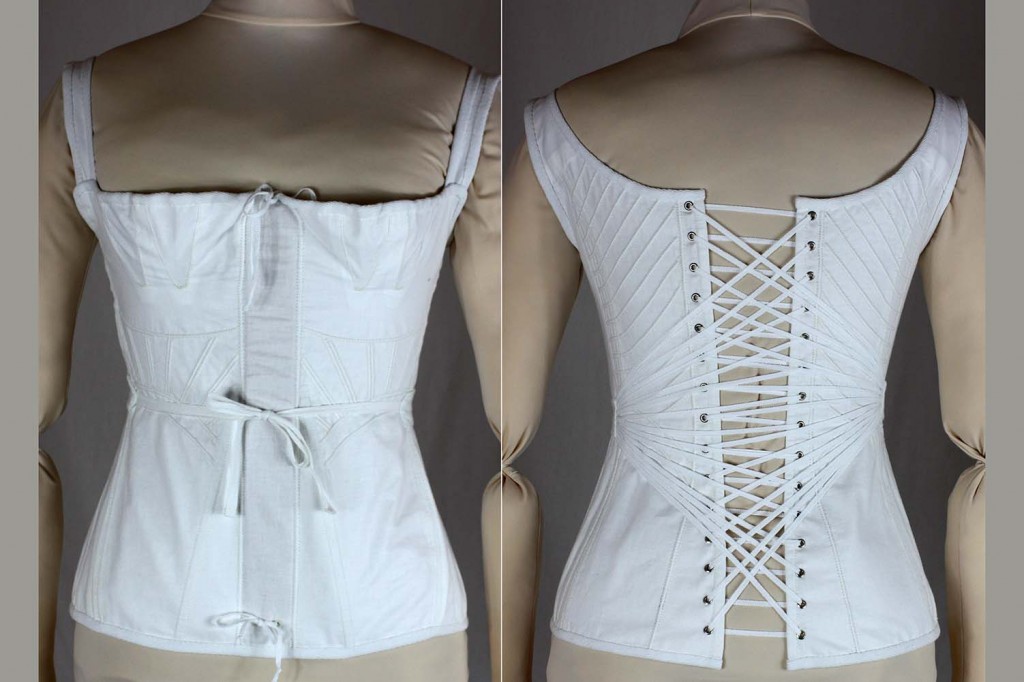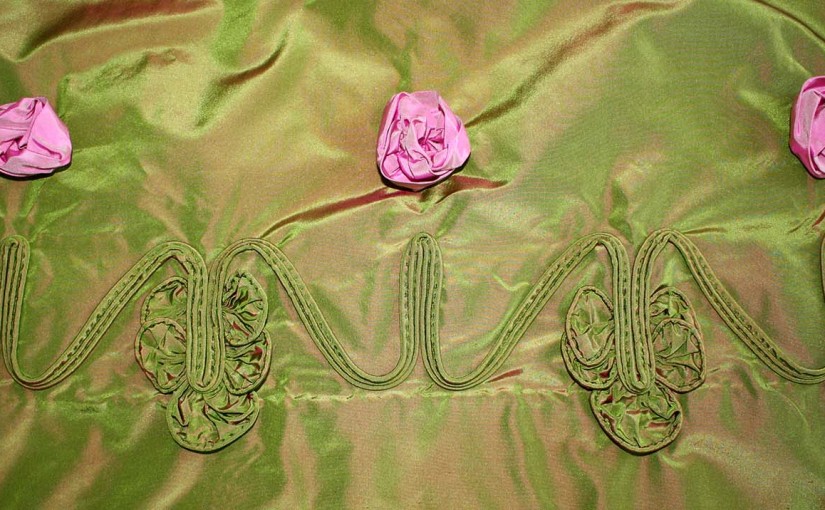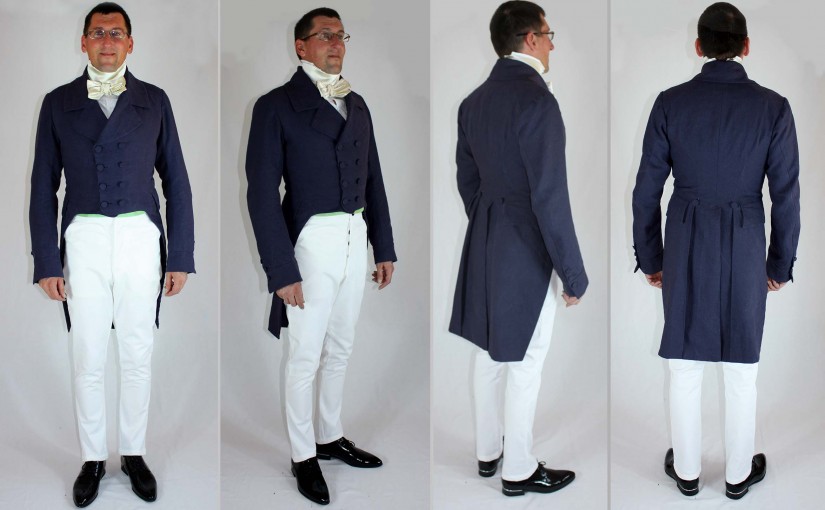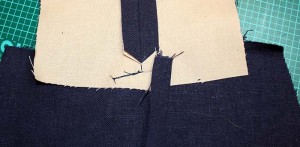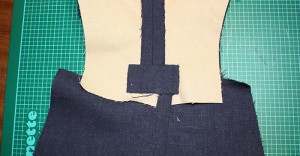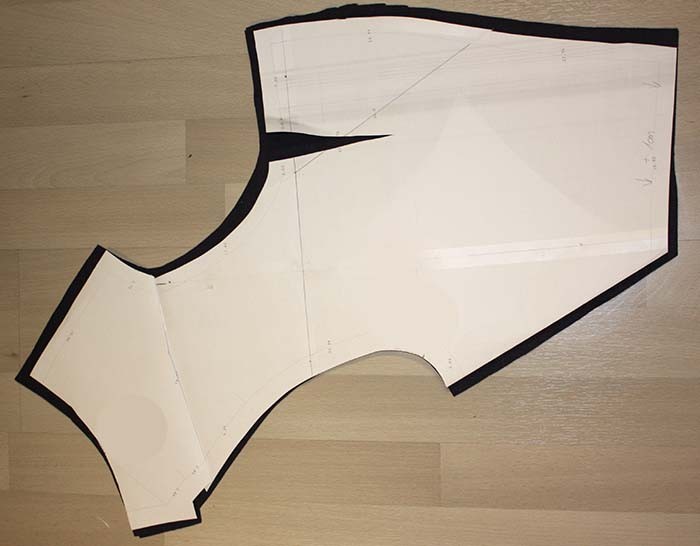When I decided to make a new 1830´s corset, I thought a lot about the lacing first. My old one had a back and front lacing; nevertheless, I had trouble to pull it over my hips or my head, struggling with all that mess of lacing cord. I asked my husband for help, but every closure more complex than a zipper causes him shaking and sweating hands. This year I´m going to join our summer ball alone, with no helping hand available. Searching the internet, I found this interesting self-lacing corset:

